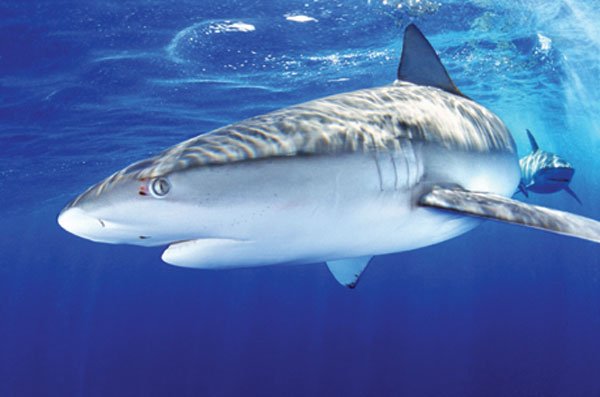MONTEREY
– There is more to sharks than the menacing creature that
terrorized swimmers in the 1970s movie
”
Jaws.
”
A new exhibit opening April 2 at the Monterey Bay Aquarium wants
to dispel some of the stereotypes about the most feared marine
animal.
By MARIA-BELEN MORAN
Associated Press Writer
MONTEREY – There is more to sharks than the menacing creature that terrorized swimmers in the 1970s movie “Jaws.”
A new exhibit opening April 2 at the Monterey Bay Aquarium wants to dispel some of the stereotypes about the most feared marine animal.
“The biggest misperception about sharks is that they are sort of bloodthirsty predators always looking to attack people, but nothing could be further from the truth,” exhibit curator Ava Ferguson said.
The “Sharks: Myth and Mystery” exhibit includes nearly two dozen living species. Exhibit developers at the aquarium, one of the most popular places along California’s central coast, want to show visitors how the common feelings of fear and fascination toward sharks and rays have influenced art, music, dance, myths and even architecture of cultures around the world.
The $2.5 million exhibit, which opens April 2, has been divided into seven small spaces representing different regions of the world, a touch pool and a discovery room. The exhibit is part of the aquarium’s 20th anniversary festivities and is expected to remain open for at least three years, aquarium spokesman Ken Peterson said.
The aquarium also has installed Shark Cam, a Web camera that will provide a view of creatures like the leopard catshark, which does not present any threat to humans even though it grows to a length of 3 feet. It gets its name not only from its body pattern but also because it can curl its body until its tail covers its eyes, just like a sleeping cat.
The Web cam will also show the rays. “People will be surprised at how active rays are,” said Ferguson. “Many people think rays just sit and lie very quietly at the bottom (of the ocean), but some species are very active. You can see a lot rippling through water like magic carpets.”
Sharks and rays belong to a group of fish called Chondrichthyes, with skeletons of cartilage instead of bone.
“They are considered cousins,” Ferguson said. “I like to say rays are flattened sharks.”
There also is a history lesson on the origin of surfing. According to a tradition on display, the Hawaiian shark god Kamohoali’i created it when he swam across the ocean in a canoe.
In the Central America gallery, a tunnel beneath a display of an ancient Maya temple ends in a pop-up window through which visitors can watch rays swim over their heads.
The touch pool includes several local species of young sharks and rays. The animals, about the size of an adult man’s hand, sport different body patterns, shapes and textures.
“Sharks are very appealing to the public and I have a feeling this exhibit will be extremely popular,” Ferguson said.
Half the creatures in the exhibit came from other aquariums, including Long Beach, Las Vegas and Newport, Ky.; the rest either were captured in the wild or bred in captivity, according to the Monterey aquarium’s Husbandry Division Coordinator Andy Case.
“We got some as juveniles and grew them up here,” Case said. “The (scalloped) hammerhead sharks that are now 4 feet long, when we got them they were about a foot long.”
Currently, the only Galapagos shark on display in North America is in this exhibit. These sharks do present a threat to humans, and even their young stay close to shore to avoid being eaten by adults of their kind.
The aquarium is located in Monterey at 886 Cannery Row. Call (831) 648-4888 or visit www.mbayaq.org for more information. “Sharks: Myth and Mystery” is included in the regular aquarium admission of $19.95 adult; $17.95 senior (over 65); $15.95 student (13-17 or with college ID); and $8.95 child (3-12) and disabled.













